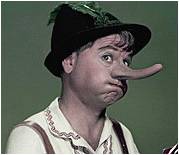영민 엄마,
지난번에 주식투자를 하면서 생기는 경비 (expenses, fees or commissions)에 대해서 간단히 설명했습니다. 이번에는 좀 더 자세히 알아 보기전 미시간 가을을 먼저 여러분과 함께 나눕니다.
*객관적이 의견을 나누기 위해서 영어로 된 내용을 직접 인용했습니다. 조금 복잡하게 보이는 점 이해 바랍니다.
첫번째 부과, 일반적으로 금융회사는 고객의 자산을 운영하기 위해 총 자산에 대해 몇 퍼센트를 부과합니다. 예를 들면, 금융회사가 어떤 분의 자산 500,000달러를 운영(manage)하며 2% 수수료를 일년마다 부과한다고 가정 합시다. 이것은 $500,000 x 0.02 = 10,000달러가 수수료로 지불 되는 것입니다.
As I (Ric Edelman) explained in The Truth About Money, you should always ask how advisors are compensated. Unfortunately, if that’s all you ask, you might not be told the whole story. That’s because there’s often a big difference between what they earn and what you pay. Therefore, instead of asking, “What is your compensation?” you should ask, “What are the total costs I will incur by working with you?”
재정설계사(financial advisor)가 어떤 식으로 수수료를 받느냐고 묻지 마시고 전체 경비(total costs)가 얼마인지를 정확하게 물어 봐야 합니다. 또한 경비에 대해서 질문을 할 때 답변을 회피하는 인상이 있으면 이 사람과 계속적으로 함께 일을 할 수 있는지, 없는지를 고려해야 합니다.
First, of course, is the advisor’s fee. Known as an asset-management fee, it is generally expressed as a percentage of assets. At some firms, the asset management fee is as high as 2% per year.
위에서 설명한대로 자금을 운영하며 부과(charge)되는 경비입니다.
두번째 부과, 금융회사에서는 분산투자를 한다는 목적으로 여러 곳에 투자를 합니다. 투자를 할 수 있는 곳은 무궁무진 합니다. 여기서는 뮤추얼 펀드(mutual fund)에 투자를 한다고 가정합시다. 금융회사에서는 뮤추얼 펀드를 선택할 때 커미션(commissions)있는 펀드, 즉 Load 펀드에 투자를 합니다. 이러한 펀드의 수수료는 대략 5~6% 가 되면 이것은 advisor가 갖는 수입입니다.
Mutual funds come in two broad categories. Those that have a sales charge and those that do not. Those that have a sales charge are called load funds and those that do not are called no-load funds. When a broker recommends a fund for one of her clients to buy, that fund will be in all probability a load fund, and the load, or sales charge, is pocketed by the financial advisor, broker, or other middlemen as payment for the "service of helping you pick a good fund."
예를 들면, 금융회사가 이러한 펀드, 즉 5%를 부과하는 Load 펀드에 투자를 한다고 합시다. 이 말은 10,000달러를 투자하게 되면 실질적으론 10,000달러가 투자가 되는 것이 아니고 9,400달러만 투자가 되고, 나머지 600달러는 금융회사에서 수수료로 갖는 것입니다. 이것은 Front-end Load, 혹은 class A 펀드로 처음 시작할 떄 부과되는 수수료입니다.
The simplest load to understand is the front-end load. Nothing too complicated about this one -- the day that you buy the mutual fund, you pay a sales fee, usually around 5%, and somewhere between 3% and 8.5%. Nothing confusing about this arrangement at all. You immediately lose a big chunk o' your money.
이외에도 class B 펀드가 있는데, 이것은 투자한 후 찿을 때 부과되는 수수료입니다. 또한 class C펀드는 갖지고 있는 동안은 매년 계속해서 일정한 금액이 부과되는 뮤추얼 펀드입니다.
현재 미국에는 이러한 경비가 전혀 부과되지 않는 뮤추얼 펀드, 즉 No Load 펀드의 종류가 더 많이 있습니다. 이러한 사실을 알고 금융회사에 연락하여 왜 나의 포드폴리오를 형성(set up)할 떄 수수료가 전혀 없는 뮤추얼 펀드에 투자를 하지 않은 이유를 질문한다고 합시다. 이러한 경우 돌아 오는 대답이 “수수료가 부과되는 뮤추얼 펀드의 수익률(performance)이 더 좋기 때문이라고 한다면” 이것은 전혀 맞는 대답이 아닙니다.

이것은 김추자씨 노래에서 나오는 "거짖말이야"입니다.
You should be aware that there is no real difference historically between the performance of load funds and no-load funds in terms of year-to-year performance. In fact, according to the latest survey by the mutual fund data analyzer Morningstar, even excluding the drag on returns if the load were included in the calculation, no-load funds actually have a superior record to load funds over the last 3-year and 5-year periods.
Morningstar 분석에 의하면 수수료가 없는 뮤추얼 펀드의 수익률(performance)이 수수료가 부과되는 펀드보다 오히려 더 좋다는 결과입니다. 그래서 다시 강조합니다.
Let us repeat that. Funds that impose no cost to purchase have outperformed those that brokers pay themselves to find for their clients.
위의 내용은 The Motley Fool에 있는 기사를 인용했습니다. http://www.fool.com/school/mutualfunds/costs/loads.htm
다음에는 자세한 세번째 부과를 올립니다.
'특별 재정계획 모음' 카테고리의 다른 글
| Annuity 하편 (0) | 2009.12.04 |
|---|---|
| Annuity 상편 (0) | 2009.12.02 |
| 모든 주식투자 경비 (0) | 2009.10.17 |
| 꾝 알아야 할 주식투자 경비 (expenses, fees, or commissions) (0) | 2009.10.10 |
| 원금 절대 보장되는 주식투자 방법 (0) | 2009.10.04 |




